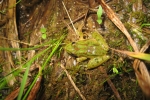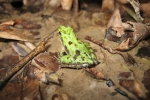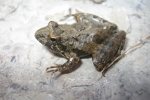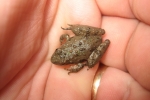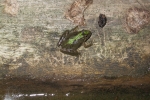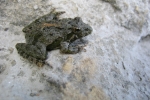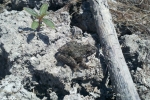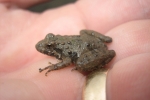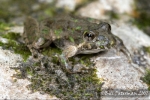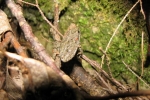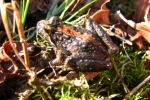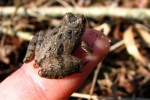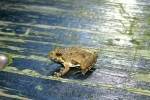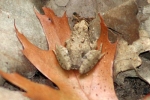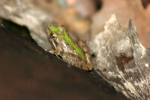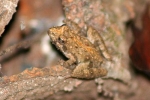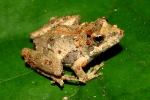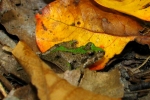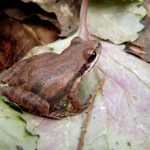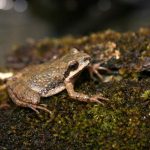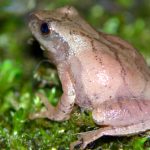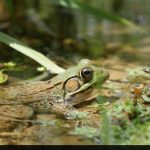Eastern Cricket Frog
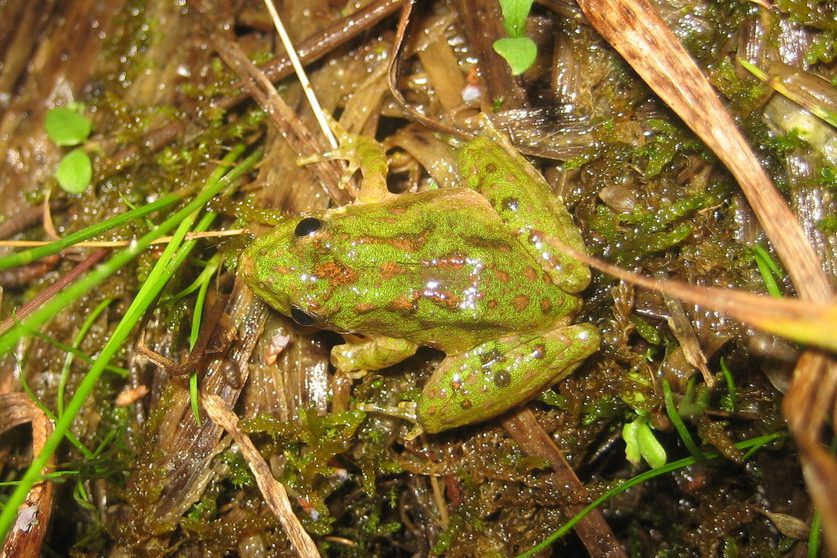
Scientific Name: Acris crepitans
Size: 0.5-1.5 inches (1.6-3.5 cm) in length
Status: Endangered Species
Habitat:
A permanent water source like slow-moving streams in open habitat, the margin of lakes and ponds, and around springs or marshy areas.
Description:
Small species. A diminutive frog with rough skin which may be greenish, brown, tan, yellowish with a dark triangle between the eyes. Stripes on back of thigh. The snout is rounded and it has relatively short legs. Extensive webbing on hind feet. Voice is a shrill measured clicking. Inhabits shallow ponds or temporary pools with vegetation.
- The dorsal body color is grey, brown or light green with a light bright green to chestnut brown middorsal stripe and dark spots scattered over the back.
- A dark triangular shaped spot is present between the eyes.
- The upper lip has alternating light and dark spots.
- A light bar extends from the eyes to the base of the forelegs.
- The dorsal surface of the hind legs has dark cross-bars and a dark longitutinal stripe aloung the back of the thigh.
- The sides of the body has large, dark diffuesed spots.
- The ventral is white.
- Small-sized species.
- The body is slender.
- The head is long and pointed.
- The upperjaw extends infront of the lower jaw.
- The fore legs are normal size and the fingers are not webbed.
- The hind legs are very long and the toes are long and webbed.
- The toes and fingers terminate into disk.
- The dorsal skin gradular with scattered warts.
- The ventral skin is smooth on the chest and becomes granular posteriorly.
- Small. Average 3-5 cm
- The dorsal surface is olive green, and mottled with black.
- The ventral is lighter than the dorsal and somewhat iridescent.
- The tail crests are low and translucent with scattered dark spots.
- The tail is similar in color to the body and the tip is black.


May be Confused With:
References:
- Hulse, C. and McCoy C. J. and Ellen Censky ,1998. Amphibians and Reptiles of Pennsylvania and the Northeast. 138-141pp.
- Bob Hamilton
- Bill Peterman
- Kyle Loucks
- Dave Emma
- Chris Harrison
- Doug Warner
- Don Becker (psychoticnature.com)
Heads up!
Please contribute your observation of this and other herps to the Pennsylvania Amphibian and Reptile Survey. Your help is needed.
